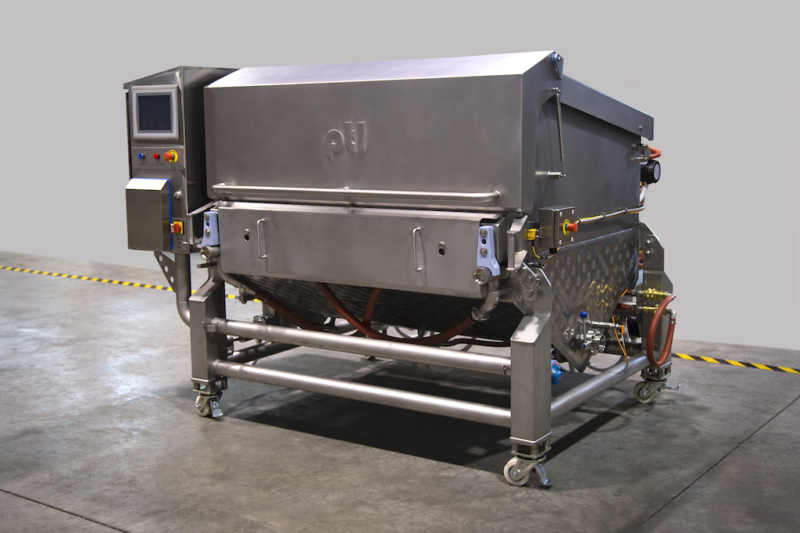Chocolate melting system from PTL developed through key industry research

Since the late 1980s, PTL has been creating an extensive range of machinery for a variety of chocolate processing functions including melting, tempering, enrobing, depositing, moulding and cooling. The business speaks to Confectionery Production about the development of its latest system, the PTL Melter V20.
New Zealand based equipment manufacturer has learned plenty about the ever-shifting requirements of equipment design over the past three decades serving the confectionery and wider food production sector.
As the company’s managing director Nick Halliday explains, despite contending with the impact of coronavirus and its influence on logistics and manufacturing operations around the world, the past year has been an eventful one. It has led to the development of its PTL Melter V20, which the company says is the result of extended research with key industry players within the sector.
Speaking to Confectionery Production he explained: “The V20 design was finalised and launched in the early stages of coronavirus. The recent launch was always planned as a virtual event so was able to proceed as planned with people joining from countries around the world.
“New Zealand has taken firm approach to tackling the pandemic, which has resulted in relatively short lock downs and a return to semi-normal life. Customers have adopted the new norm of virtual communication and we have formed strong in-market support partnerships.
“In the early stages of the pandemic we saw companies place projects on hold, focusing solely on maintenance and efficiencies. We are now seeing companies, more settled and looking to capitalise on growing food consumption and demand for chocolate and snack products. So, despite the disruption PTL are well placed to design and manufacture machinery and support our global customers,” explained the managing director on the backdrop to the company’s latest equipment range, which gains its full roll-out this month.
The company, which has its head office in Auckland, has developed a specialism in equipment ranges that span bar machinery and enrobing systems, through to moulding and depositing lines for its global customer base.
As for its latest melting system, this promises an improved melting rate of more than 125% over previous models, which it claims makes a significant difference to its operating capability.
‘’Our customers, especially the multinational brands we work with, were telling us they needed to make their production process faster and more flexible, as they were producing more SKUs with shorter lifecycles,’’ reveals Nick Halliday, who says that offering more power and flexibility, within a machine designed with a smaller footprint are some of its key features.
‘’Product melting capability is central to this, so we looked at our melter from the ground up, with the aim of delivering a machine that could support increased production, lower costs and greater agility.’’
‘’With a melt rate that is up to 125% higher than previous melters our customers can significantly boost their bottom line, achieving instant melting as well as continuous process supply, improving their downstream production rates.
‘’Changeovers are an area that restrict production efficiency and the ability of our customers to be flexible, so we’ve addressed that in the V20 by transforming the changeover process. Masses/coatings can be quickly switched and wash down is fast and simple, with a focus on allergen cleanability. For example, all product contact surfaces are removable or accessible for cleaning.’’
He added that its footprint, which is around 45% smaller than former models, offers a self-contained, plug and play design for any production area. It eliminates the need for a tank/kettle strategy and for long pipe runs, as it can be situated next to use-point.
Furthermore, it has been designed to melt multiple SKUs, manage allergens and minimise downtime, having been tested with multinational companies and co-manufacturer businesses throughout the US and other markets.



